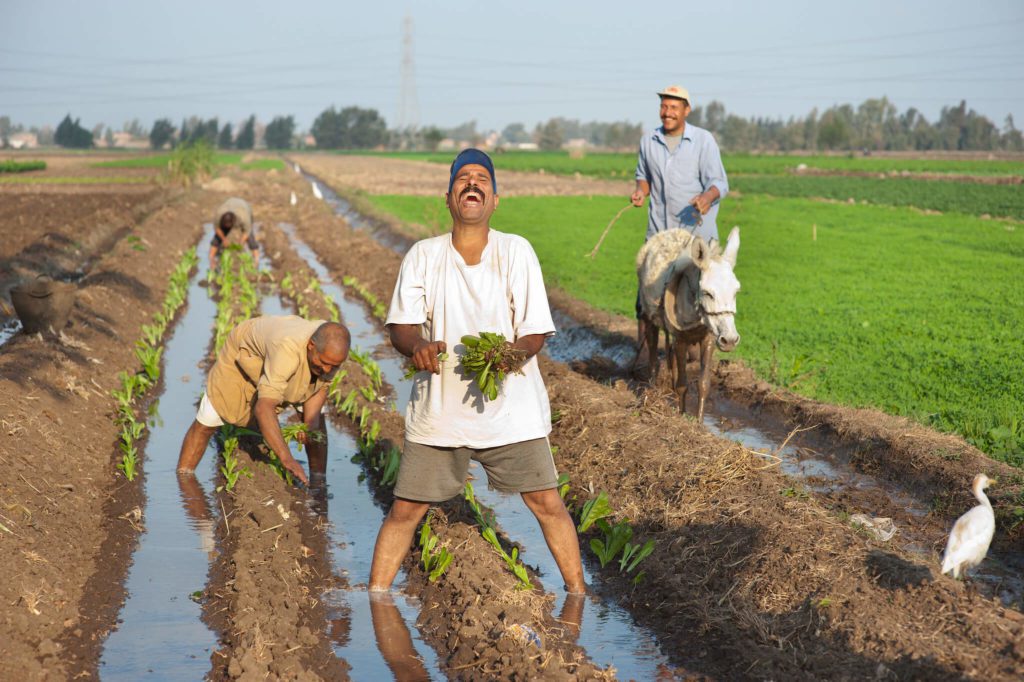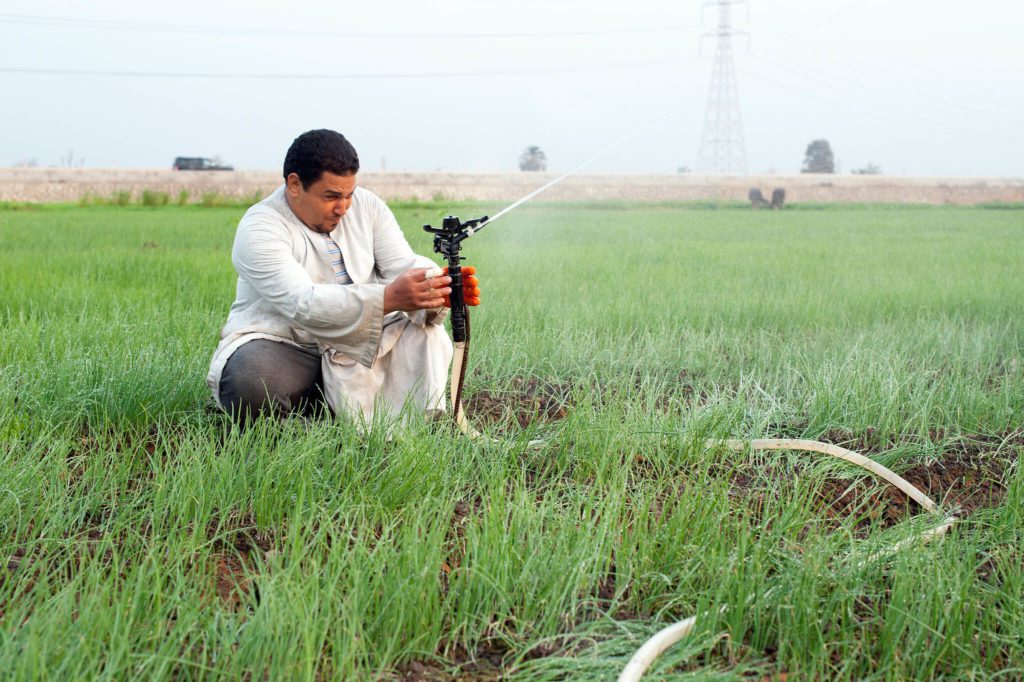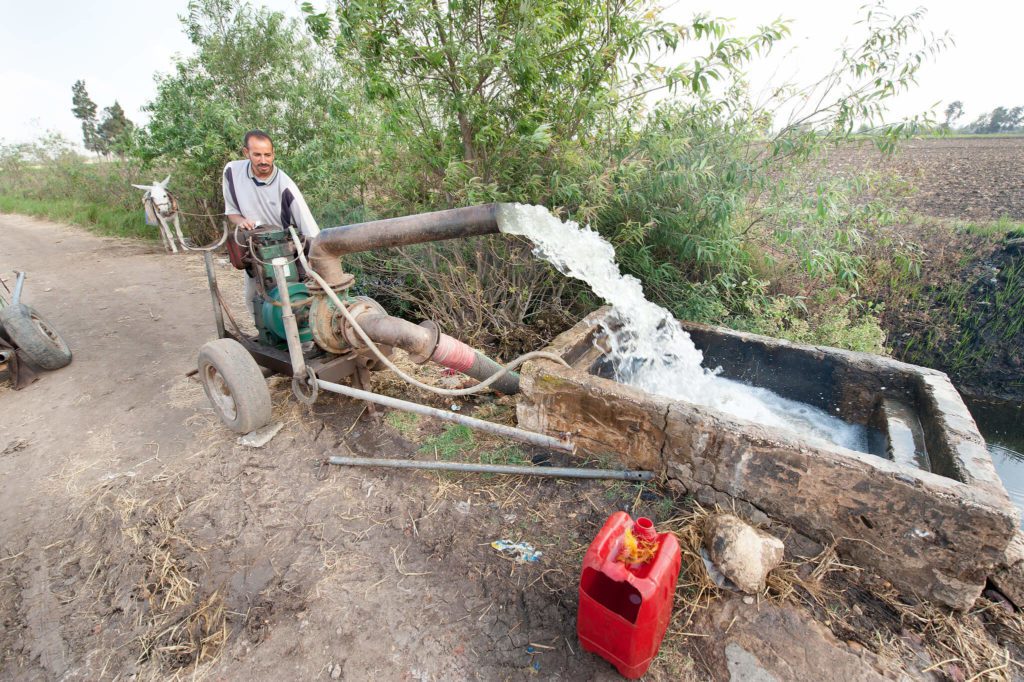Recycling Water to Ensure Food Security in Egypt
Managing costs and safety concerns to combat resource insecurity.
Egypt is suffering an increasing water supply-demand gap; expected to keep growing due to population growth and climate change impacts. The hosting country of the twenty-seventh session of the Conference of the Parties (COP27) is also experiencing the impacts of the war in Ukraine due to the disruption in global food supply chains, hampering water and food security in the country and preventing it from reaching the Sustainable Development Goal (SDG) 6 on ensuring safe drinking water and sanitation for all.
The decisions taken at COP27 reflect the global challenge of food insecurity linked to water, and offers a roadmap for climate action in agriculture to tackle this issue.
Wastewater: part of the problem and part of the solution
Egypt is a water-stressed country. The constant population increase, and a shrinking water budget are overstretching available water resources. The annual per capita water share continues to decrease year after year.
“Per capita annual renewable fresh water was 1,593m3 in 1970, it dropped to 804m3 in 2000, and 584m3 in 2020”, according to Javier Mateo-Sagasta – senior researcher and project leader at ReWater MENA project, International Water Management Institute (IWMI).
Water is part of every step in the food value chain, from food production to processing and consumption. The reduced amount of freshwater available impacts both the climate and food security, triggering social instability. Egypt’s water demand is 114 billion m3 per year. However, the country only has about 60 billion m3 per year available, of which more than 90% is supplied by the Nile River, making it less resilient to dramatic climate change and extreme weather.
However, not everything is negative. Egypt has an untapped opportunity with wastewater. More population translates into more wastewater produced creating an opportunity to recycle and reuse it – but also a danger for ecosystems and human health if that growing amount of wastewater is directly discharged untreated. In 2020, the total municipal wastewater generated in Egypt was 7.2 billion m3, according to data shared by the ReWater Mena project. However, Mateo-Sagasta explains that only 77 out of more than 500 municipal wastewater treatment plants in the country reused their effluents directly for productive purposes. That accounts for less than 5% of the total wastewater generated.

Direct or indirect water reuse?
Water is not always reused following the same process. A basic difference is between direct and indirect water reuse. In the former, wastewater is first discharged into a water body where it undergoes dilution prior to use downstream. While in direct water reuse, wastewater goes through an advanced treatment plant that eliminates pollutants.
There is yet another difference in the regulation of both processes. As the ReWater MENA project sourcebook highlights, indirect water reuse is typically considered safer, so it is normally not regulated or controlled. Nevertheless, indirect reuse can be unintentional, and users downstream do not know the sources or quality of the water they are using with obvious health risks, while direct reuse is often strongly regulated and sometimes prohibited for food crops.
With this in mind, Egypt has reacted to the dwindling per capita water share by reallocating freshwater to priority uses like drinking water, while maximizing the share of drainage water reuse in the agricultural sector (as officials agree with the view that indirect water reuse is safer than direct reuse.)
“The indirect reuse model in Egypt is associated with agricultural practices in the Nile Delta, particularly for farmers at the tail ends of the irrigation network where freshwater quality and quantity are reduced”, explains Bezaiet Dessalegn, Livelihood and Gender Specialist at the International Center for Agricultural Research in the Dry Areas (ICARDA).
Almost 60% of generated wastewater is reused indirectly, after discharge and dilution in water bodies, Javier MateoSagasta explained. He added that around 35% of generated wastewater is lost when it is discharged into the environment and evaporates on land, along rivers, or is lost in the sea.
Mateo-Sagasta says “We are wasting here not only water but also resources embedded in the water, including nutrients like phosphorous and organic carbon that if recovered can be used for energy production in the form of biogas and methane to generate electricity for households.”
The indirect reuse of wastewater in the Nile Delta was estimated at 9.31 billion m3 in 2015, and the target is to increase the amount to 16.26 billion m3 by 2037. However, the high concentrations of pollutants in the discharged untreated wastewater was being mixed with treated wastewater, forcing the ministry to close many mixing pump stations, hindering the reuse of an estimated 2.37 billion m3 per year.
Direct reuse is an alternative, but it is more expensive for the administration and the end user. Research shows that the treatment of 1m3 of wastewater costs the HCWW around 2.6–3.0 Egyptian pounds (LE). This is around three times more than the current water tariff per m3 for domestic use. “Legislation is not giving the required incentives for entities to reuse treated wastewater. In many cases, it might be cheaper to use fresh water”, explains Prof. Khaled M. Abu Zeid, Senior Regional Water Resources Director Centre for Environment & Development for the Arab Region & Europe (CEDARE).
However, besides the centralised control and management of wastewater by the HCWW, there is an informal wastewater collection and reuse system in the Delta. This illegal system is managed by local actors who organize their activities through socially embedded arrangements, which are not recognized by the institutions. The recognition and legalisation of this informal system could “potentially help to narrow the water demand-supply gap for irrigation in a safe and environmentally friendly manner in Egypt”, as research held within the ReWater MENA project highlight.

Working towards safe water reuse
The upscaling of water reuse projects – whether direct or indirect – faces barriers related to governance, social acceptance and investment. The technologies to reclaim water and recover the resources embedded in it do exist. “But to recover all these resources, there are many challenges, mostly legal, institutional, or simply lack of awareness,” Mateo-Sagasta said, adding that water can be used in cities and reused in agriculture, with benefits for all.
We need regulations to encourage direct wastewater reuse, and we need to show the benefits and need for water reuse and recycling to the public.
Javier Mateo-Sagasta
ReWater MENA worked on two pilot sites in Egypt to analyse the barriers and opportunities for direct and indirect reuse. The pilot site for indirect reuse was in the Nile Delta within the Kafr El Sheikh governorate, close to the Sakha wastewater treatment plant. The direct reuse site was in the governorate of Ismailia and near the Serapeum wastewater treatment plant.
Bezaiet Dessalegn explains that each site presented different environmental, and socio-economic challenges and opportunities for reuse. However, she highlights that the main barrier is not user resistance to new ideas – because “they are very much interested” – but more on the marketing side where perceptions influence market prices.
In parallel to the work on the sites, the project has been working on the development of the Egypt 2030 Shared Water Reuse Strategy. The strategy has been built following a participatory process that gathered representatives from the Ministry of Housing, the Ministry of Water Resources and Irrigation, the HCWW, the Ministry of Agriculture, and the Ministry of Environment, as well as research, academia, NGO representatives, entities and farmers associations.
The increasing frequency of extreme weather events has exposed millions of people to acute food and water insecurity.
Having a space for discussion between all stakeholders has helped align objectives, explained Prof. Abu Zeid. The creation process of the strategy has been a stepping stone for the multisectoral dialogue in Egypt, now this needs to be sustained and kept in place in the future. “The strategy needs a follow-up, an action plan with specific projects”, underlined Prof. Abu Zeid.

Water and food security at COP27
“We need regulations to encourage direct wastewater reuse, and we need to show the benefits and need for water reuse and recycling to the public”, Javier Mateo-Sagasta said, pointing out that public awareness of water reuse is still lacking. A statement that is reflected in the decisions taken at COP27.
This is best reflected in the joint work on the implementation of climate action on agriculture and food security. The adopted decision -/CP.27 builds on the outcomes of the Koronivia joint work on agriculture and acknowledges that “the increasing frequency of extreme weather events has exposed millions of people, especially small-scale farmers, those from low-income households, indigenous peoples, women and youth in developing countries, to acute food and water insecurity”.
The document notes the importance of considering “sustainable land and water management for agriculture in a systemic and integrated manner informed by scientific, local and indigenous knowledge implemented in a participatory and inclusive manner”.
The decision taken at COP27 opens a four-year joint work roadmap with the objectives of promoting a holistic approach and enhancing research and development on issues related to agriculture and food security. For Egypt, this is a chance to ensure food and water security for future generations.